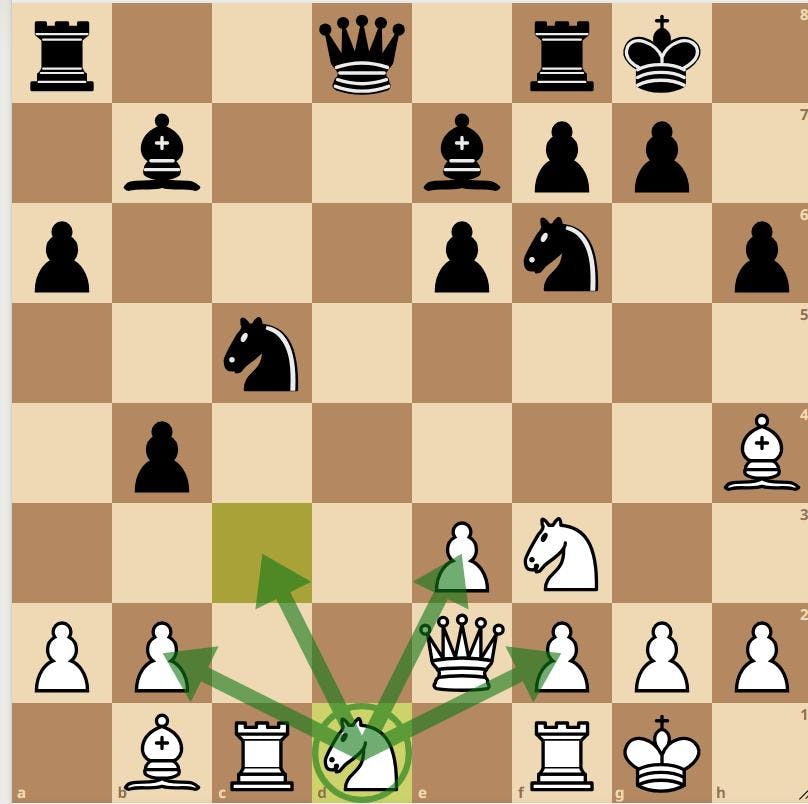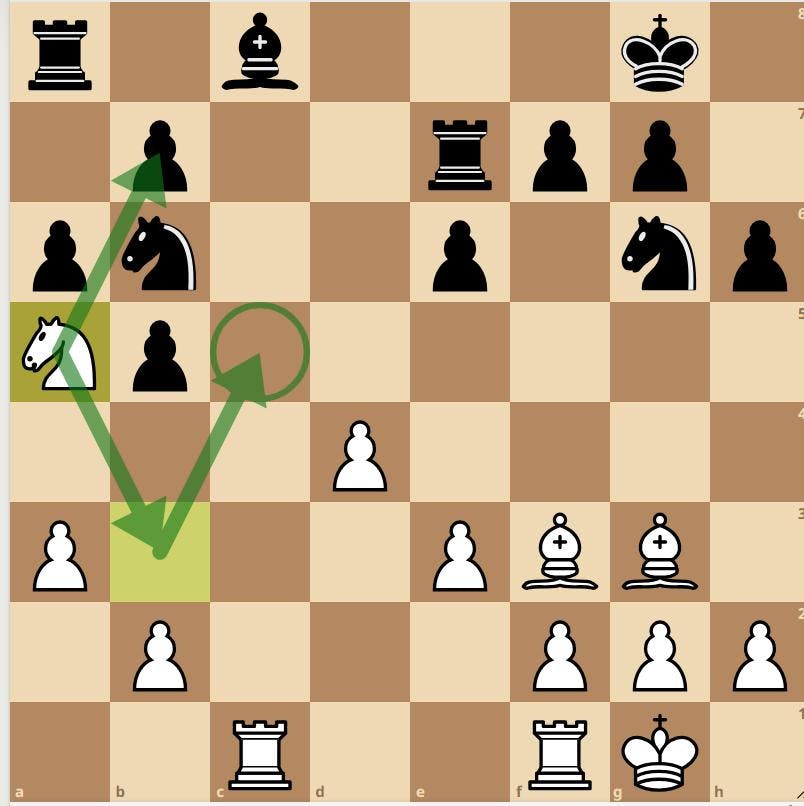
1. The d1 knight has no future

2. The a5 knight is good, but could be better
The Tarrasch dictum (or formula, or principle) holds that one misplaced piece renders its owner's entire position bad. The knight on d1 in position 1 is misplaced not because it is not participating in the game, but because it has no obvious route to participating in the game. The onus, then, is on the owner of such a piece is to improve its potential.
The corollary of this observation is that a piece is not necessarily misplaced if it does not appear to be performing an immediate function, providing it has a route to performing a function in the future. A good example of this would be black's c8 bishop and a8 rook in a King's Indian Defence. Both pieces may be considered effectively developed while remaining on their starting squares, as their futures are on the c8-h3 diagonal and the a-file respectively.
A further principle can be extracted: even if your pieces are generally well-placed, you should identify the piece which can be further improved. In position 2, the knight on a5 is well-placed attacking b7. But, at some point in the future, it would be better rerouted to c5 where it covers more squares in the opponent's position.
See: 'Development'.
